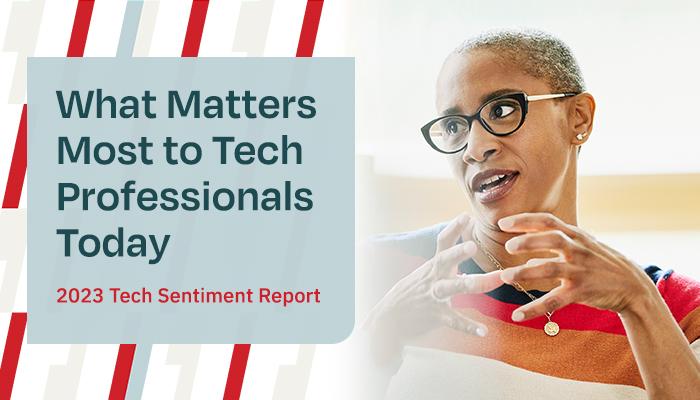
If you were to isolate the hardest part of recruiting, it would probably be difficult to choose to just one. You have to find the right talent, tell them about your business, sell them on the company’s culture, and pitch them on the corporate vision. After all that, you have to just hope those candidates are interested in pursuing employment with your organization. Wouldn’t it be a lot easier if candidates were already familiar with your company, creating less work for you and increasing the likelihood they'll accept employment? Easier recruiting is possible if you’ve spent time building your employer brand. Check out tips from HR and recruiting professionals on how to build and manage your company's public perception so you know candidates will be on board.
TIP 1: Make sure all employees know the company elevator pitch
“What do you do?” is one of the first questions asked upon introduction in any social setting. The “What do you do?” moment is an excellent opportunity for an employee to get across the employer brand. To be successful employer brand ambassadors, make sure your staff is well-versed in the company’s elevator pitch. “Give them an ‘elevator pitch’ that they can use when asked ‘What do you do?’ that encompasses what they do and who they are doing it for,” says Nov Omana, CEO of Collective HR Solutions and previous IHRIM chair.
TIP 2: Focus on retaining current employees
“When you have high turnover, that is a sign that something is awry in the organization,” says Joey V. Price (@joeyvpriceHR), CEO of Jumpstart:HR. “The best thing that employers can do to improve upon their brand is to do their best to retain current employees and practice what they preach about culture and ‘people are our first priority.’" Given that 55 percent of job seekers are looking for opportunities in growth and development, Price advises employers to proactively map out employee development and succession plan strategies. “The more specific employers can be with available opportunities, the better their brand will be perceived,” says Kes Thygesen (@rolepoint), Cofounder and Head of Product at RolePoint.
TIP 3: Promote the stories of your top employees
“People take jobs (and stay in jobs) to work for great managers and collaborate with other great people. If you have great people with great stories, get them outside the walls of your company,” says Dan Arkind, CEO of JobScore. “Set aside time and money for top performing employees to blog.”

Dice’s latest look at how tech professionals think and feel about tech’s most pressing trends is here — and ready-made for your hiring needs.
TIP 4: Create a space for all employees to express work life; day-to-day and in real time
Besides investing in top employees publicly blogging, create a reservoir for all employees to express their day-to-day activities via a social network. Let them post photos, videos, and messages to demonstrate how they live the brand, suggests Chris Grasso (@tmpww), VP, Business Development for TMP. The site could be internal facing with the option to graduate certain approved content to a publicly facing career page. The dynamic content will allow candidates to experience the brand and dramatically help with search engine optimization (SEO). Grasso offers another great suggestion of hosting a live chat and allowing employees to answer questions with prospective candidates.
TIP 5: Encourage “employee ambassadorship” through industry communities
While it’s valuable to publish content about your company on your career site and blog, you have to leave the nest and go to industry communities, online and offline, where your potential candidates already are, says Sal Loukos (@sal_loukos), Sourcing Manager at Seven Step RPO.
TIP 6: Employer brand is built on the brand of individual employees
Employees will participate in blogging, social media, and online discussion boards primarily to build their own brand. Even if initially selfish, when the individual brand is in sync with the corporate mission, it benefits the company. “A social business has alignment with select employees whose brand develops in the market. When such alignment exists, we see a halo effect,” says Bernie Borges, who founded Find and Convert. One of the best examples, notes Borges, is Matt Cutts of Google. He has been built up as the face of Google to the SEO community. His blogging, community participation, and public speaking help build both his personal brand and Google’s employer brand.
TIP 7: What are your employees currently saying?
“Get a sense of what the company's brand currently is with the employees you already have,” says Elene Cafasso (@Enerpace_Elene), President of Enerpace. “Start by asking current employees what they would tell a friend about working at the firm.” “Assuming you like it, package it and start communicating it. If you don't like it, go back to the employees and find out what the company would need to look like, to them, in order for them to describe your employer brand the way you want,” says Cafasso.
TIP 8: Coordinate content and social media efforts for maximum impact
"Take an integrated and coordinated approach to leveraging social media channels,” says Larry Jacobson (@Vistaprint), Director, Technology Talent Acquisition for Vistaprint. “For example, if you're launching recruitment videos, have everyone in the company do it on the same day via their Facebook, Twitter, and LinkedIn accounts. This will make a big splash and get more attention versus the information just slowly going out."
TIP 9: Use photos to promote your brand
Photos are an amazing branding opportunity because they drive high levels of traffic and interaction. They’re a social engagement powerhouse. Facebook posts that include an album or picture increase engagement by an average of 180-120 percent, respectively. Pinterest, the fastest growing social network in history, is second only to Facebook in driving referral traffic. Evan Lesser (@clearancejobs), Managing Director of ClearanceJobs.com is bullish on Pinterest. He recommends creating a company Pinterest space and posting photos of your company products, workplace, awards, accolades, and company events.
TIP 10: Fix your company’s profiles on social sites
When is the last time you looked at your company’s profile on all the job boards and social networks? Can’t remember? Chances are it sucks, says Jeremy Langhans, Global Brand and Talent Acquisition for Expedia, who believes that updating your profile page is the easiest and fastest thing you can do to improve your employer brand. Don’t know if your page needs updating? Ask yourself, “How long can you spend reading through it before you become bored,” says Rick Barfoot (@rjbarfoo), Recruiting Technology Consultant. “If it doesn't remind you why you’re excited about working for your employer, chances are it's not going to do that for top talent and passive candidates.” “Quit talking about doing it and running it through HR a million times. Just go fix it up,” says Langhans. “Candidates that you want to hire are checking it out. If you don’t fix it, they’re going to pick a company that did fix it. Also, be transparent. You don’t want a situation of them saying, ‘That’s not the company I saw on the website.’ You’re not going to get conversions.”
TIP 11: Optimize your career page for mobile
Contrary to a misled popular opinion, prospective candidates don’t wait to get home to check out new job opportunities. The most popular time to search for jobs is between 11am and 2pm on a Monday, which means they’re looking for jobs at work. And since most users realize their computer use is moderated, they do those searches on their mobile phone. Sadly, almost 90 percent of the Fortune 500 have yet to optimize their career sites for a mobile web browser. “More than half of social interaction is via smartphone. The return on investment from social recruiting can be doubled if the brand supports mobile,” says David Martin, Mobile Evangelist at PocketRecruit.com. “Consider the relationship damage and perception impact when a potential candidate taps a call to action from Twitter on their mobile to be shown a desktop site that they cannot complete on their mobile.”
TIP 12: Gamify employee participation
Ultimately, you want employees to be so excited about their work that they’re eager and happy to express those stories in open social spaces. That doesn’t always come right away, so you sometimes have to juice participation. Here are some suggested engagement techniques/games from Gyutae Park (@MoneyCrashers), Partner at Money Crashers, and Dan Curtin (@dcurtin10), VP of Emerging Affairs at PIHRA.
- Play Safety Bingo or similar game-style incentives to reach a corporate goal
- Pose industry questions
- Conduct surveys
- Offer giveaways to those who “like” or recommend your content
- Hold a live Twitter chat
“The purpose of these games is you want your readers and employees to feel engaged and empowered enough to tell their friends,” says Park of Money Crashers.
TIP 13: Use video to “show, don’t tell” the employee story
“No other medium in the world combines culture, message, and mission in a ‘show, don’t tell’ fashion as well as video does,” says Yazad Dalal, VP of Global for TMP. “HR needs to take a cue from MTV – global music brands are able to present a lifestyle, attitude, success, personality, and message through a three-minute bonanza of sound and light. There is no reason employers can’t do the same thing.” Suzanne Bates (@CEOCoachBates), CEO of Bates Communications suggests three different video techniques for building employer brand:
- Get some of your best employees talking about what they love about their job
- Invite your best customers to a meeting and talk to them about how much they love your company and why
- Have your CEO do a weekly video highlighting employees and teams that have done something to build the company brand
TIP 14: Focus on building a world-class candidate experience
“Nothing can tear down an employment brand faster than a poor candidate experience,” says Ben Gotkin (@bengotkin), Principal Consultant for Recruiting Toolbox. “A world-class candidate experience will do as much if not more to benefit your employment brand as anything that you would ever do creatively with collateral, your career website, or with social media.” For more on how poor candidate experience is now and how we can improve it, see our interviews with Gerry Crispin (@gerrycrispin), one of the founders of The Candidate Experience Awards.
TIP 15: Provide a transparent and imperfect view inside the organization
“Focus on delivering relevant, valuable content to distinct talent populations that provides a true transparent look inside the organization and lets talent easily figure out how they can contribute to the future success of the organization,” says Master Burnett (@MasterBurnett), Director of Strategy for BraveNewTalent. “Organizations go too far in trying to make the organization seem perfect,” says Burnett. “Talented professionals that are motivated to contribute to a greater success can't easily see themselves making an impact in a perfect environment. They need to know what isn't working, or what solution has not yet been figured out so they can realize ‘that's where I can apply myself.’"
TIP 16: Own a space of interest to candidates
“A company needs to identify a ‘white space’ in an industry, fill it, and then do everything and anything they can to own that space,” says Zachary Dearth (@BostonZachD), Recruiting Manager for Randstad Technologies. The space Randstad chose to own is that of the expanding skills gap in the U.S. As of September 2012, there were 3.6 million open jobs and 38 percent of employers cited a skills shortage as the reason they couldn’t fill those openings, says Dearth. Owning a space is not easy. It requires a ton of valuable content that your audience wants. Randstad launched the “Inspiring Experts” campaign, which is a series of video interviews of experts talking about why they love what they do and how they’re making a difference. The company hopes its effort will bring voice to the issue and help fill the national skills gap. “Our goal is to inspire the next generation of workers to look towards careers with stable futures in growing industries,” says Dearth.
TIP 17: Foster, support, and reward innovation
“Companies need to encourage their employees to be inner-entrepreneurial entities,” says Peter F. Young, Director of the Silicon Valley Center for Global Studies. “Experimenting in the workplace is one of the most rewarding experiences for employees ever,” says Young, who recommends cash incentives for applied research. “Think of this program as being the ‘company suggestion box on steroids and with a purpose.’”
Tip 18: Keep employees happy
Perhaps most importantly, keeping employees happy is critical to maintaining employee brand. “Make sure your employees know how integral they are to your company brand,” says Park of Money Crashers. “A dissatisfied employee venting displeasure online can render all your progress useless.”


